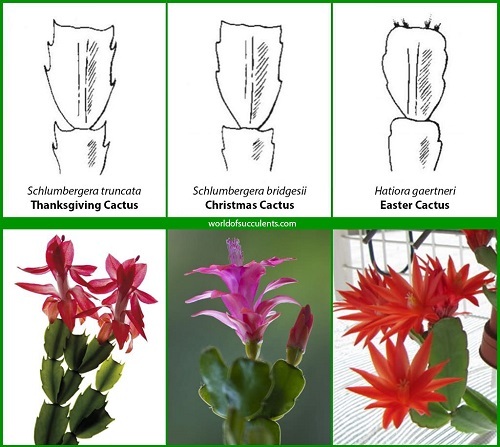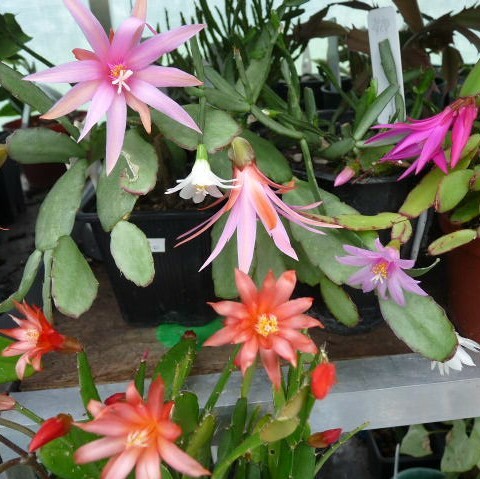Stop the Confusion! The Essential Kiwi Guide to Zygocactus (Holiday Cactus) Care
Stop the Confusion! The Essential Kiwi Guide to Zygocactus (Holiday Cactus) Care
The Naming Tangle: Zygocactus vs. Easter Cactus
The names 'Christmas,' 'Thanksgiving,' or 'Easter Cactus' all originate from the USA, based on their seasonal blooming. This means when a Kiwi shows off a beautiful Holiday Cactus around Christmas time, chances are they're actually showing you what the Americans call an Easter Cactus! Confusing as!
In New Zealand, we commonly refer to the whole group as Zygocactus. This name stuck with us because it was the old, historical genus name for the Thanksgiving Cactus (Schlumbergera truncata)—it simply became the easy, encompassing term for the whole group.
From my experience, though, it's important to know the difference: we use Zygocactus for the Schlumbergera varieties (Thanksgiving and Christmas Cacti), but the Easter Cactus (Rhipsalidopsis, formerly Hatiora) is a distinctive, separate species botanically.
Plant Fact: Did you know Schlumbergera flower colours can sometimes vary quite a bit? I've seen a very distinct 'pink flower' one year become almost 'white' the following season! It keeps you on your toes. Another blog I wrote about these beautiful plants. Here.
Despite their similar appearance and growth habits, their specific growing and blooming periods are what really sets them apart.

✂️ Taking Cuttings
The optimal time for taking cuttings from these beauties is when they are not in bloom. However, if you share cuttings with friends, they often have buds that might still bloom—bonus! Prompt removal of those spent blooms is a good habit; it stops the plant from wasting energy on making fruit and seeds. These seed pods take about a year to fully mature.
There are heaps of ways to strike cuttings of any of these jungle cacti. You'll want to allow the cut end to dry and callus over for a couple of days first.
Here are a few methods folks use—try a few and see which suits your style best:
-
Straight into soil: Plonk them straight into a pot. Water occasionally and don't fuss over them too much.
-
Into soil, then into a plastic bag: Put the cutting in soil, then slip the pot into a plastic bag to lock in some extra moisture.
-
Into a damp, zip-lock bag (no soil): This method is great for encouraging roots quickly. You often see aerial roots popping out between the cladodes when they’re in zip-bags.
-
Propagate in water: I've seen it done, but it’s not for me! I prefer to ignore my plants a bit, and this method requires me to check on them far too often for my liking!
When planting, try to put two cladodes in the soil if you can. Or at least place the next cladodes at soil level to ensure optimal rooting zones. If you have a larger cutting, burying more cladodes is a great idea to help establish a stronger root system.
Remember, my preference is not to take cuttings while my plants are flowering. The best time is after they've finished blooming and all the spent flowers have dropped off.
Watering and Fertiliser Schedule
These plants benefit from a cycle of rest and activity to encourage those fantastic blooms.
-
Before blooming: Reduce watering significantly for 4–6 weeks.
-
Active growth/blooming: Once they show active new growth, increase the water and fertiliser again.
-
After flowering: They need a rest period here too, also for 4–6 weeks. Reduce the water and do not fertilise at this time.
General Rule: A good, simple guide for most plants is: when they are actively growing and blooming = more water and regular fertiliser.
☀️ Other Requirements
This is key: these are not desert cacti! They are tropical epiphytes (or jungle cacti), naturally hailing from humid, jungle environments.
-
Humidity & Water: They absolutely love high humidity and constant moisture—but not wet feet! Water them well and let them drain completely; never let them sit in a puddle.
-
Light & Temperature: They need warm, bright light. They do not like or need direct, harsh sunlight (it'll scorch them) or frost.
-
Soil: Well-drained soil is best. I use a standard bag of potting mix and add one-third to one-half extra pumice to improve the drainage. I tend to make one big mix like this and use it for most of my houseplants.
✨ Extra Care for Tricky Types
Some types, generally the red-flowering Schlumbergera often develop red leaves, can be a bit trickier to grow. These can get stressed easily and struggle to thrive. It’s always a good idea to have a backup plant of these just in case your main one decides to have a tantrum!
And for a deep dive into any of my other plant chats, here is a link to all my previous blogs: [Link to all previous blogs]
Don't forget to sign up for the latest tips and news from KatsFlora: here
Posted: Saturday 16 December 2023
Recent Posts
Archive
Tags
| Top |

